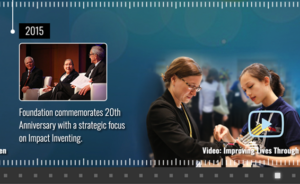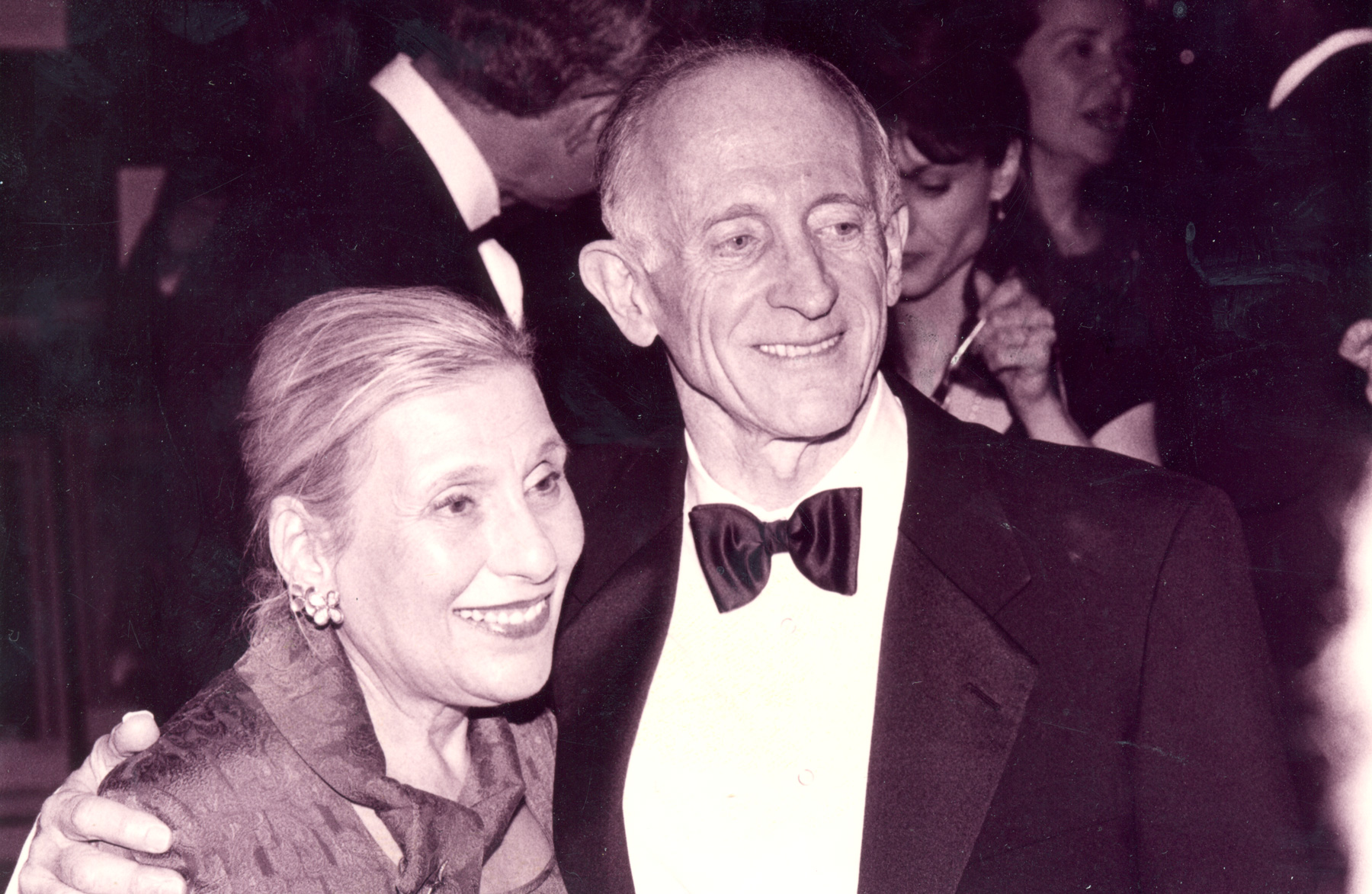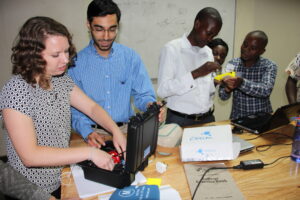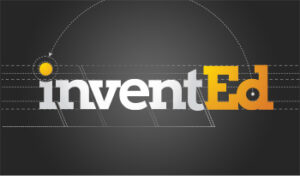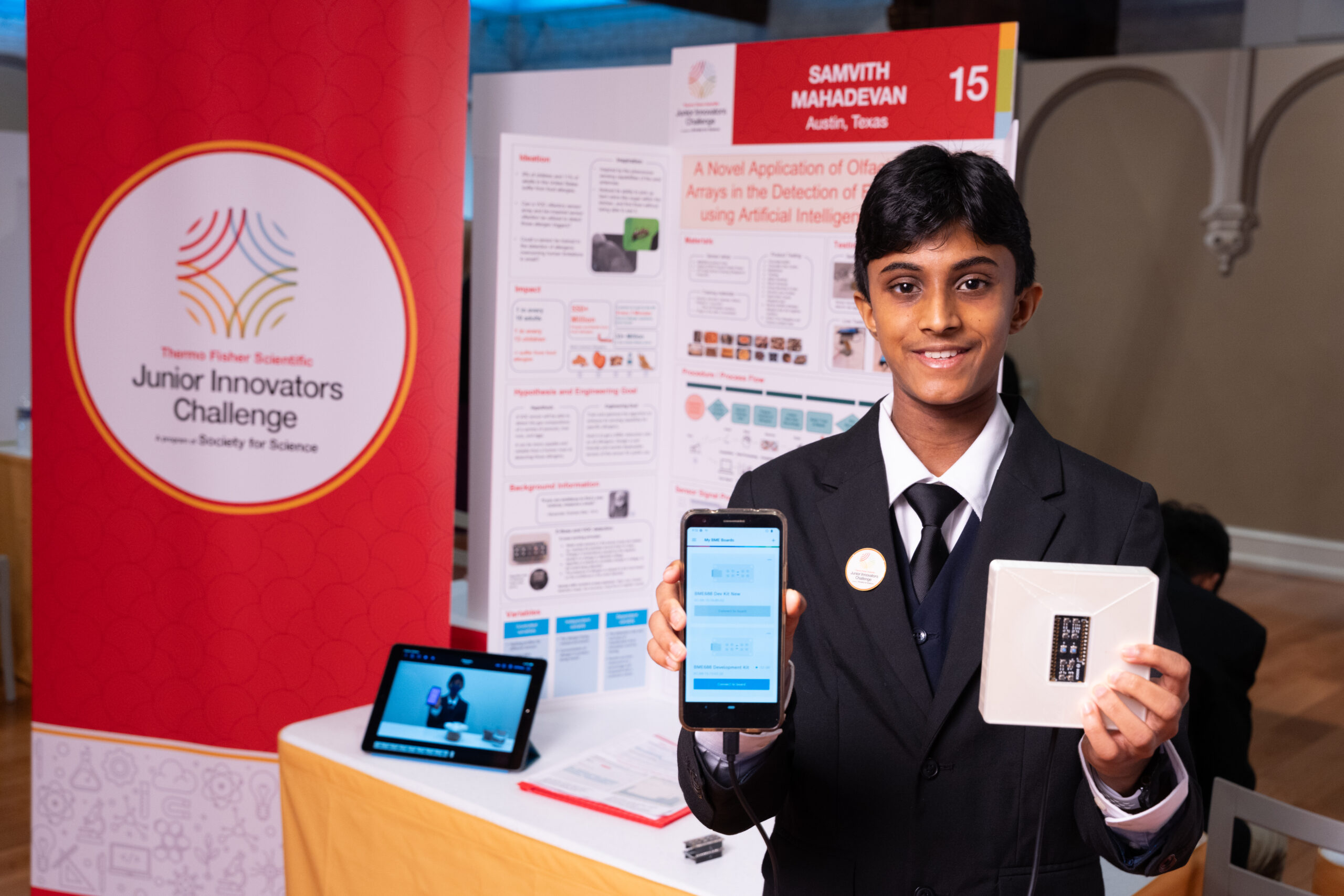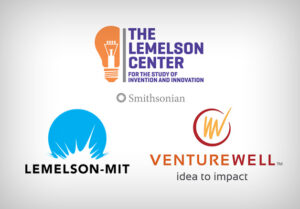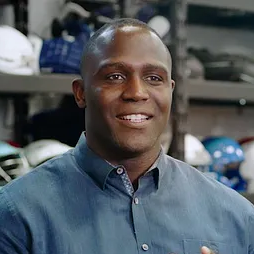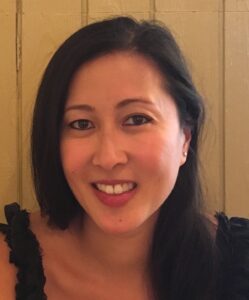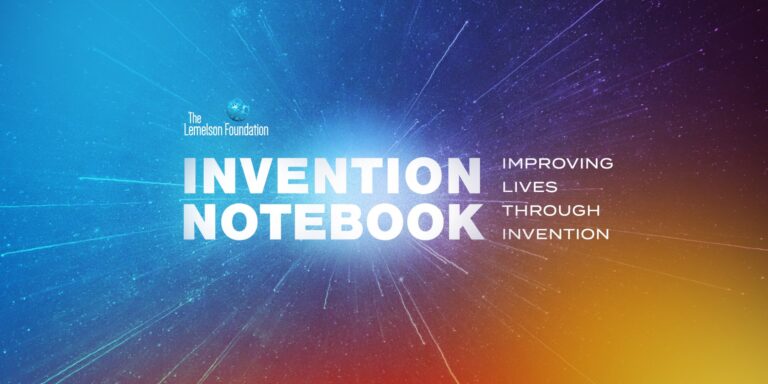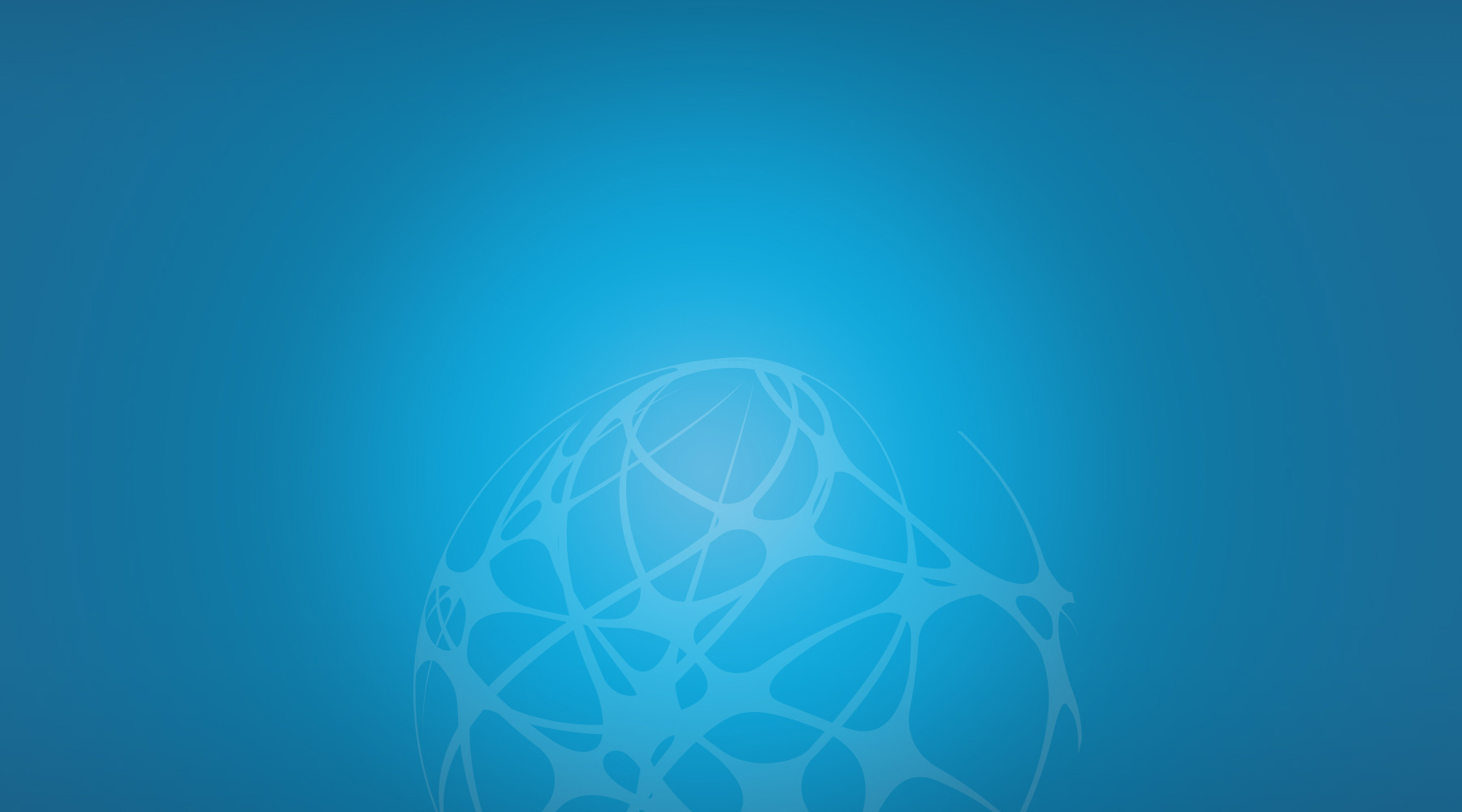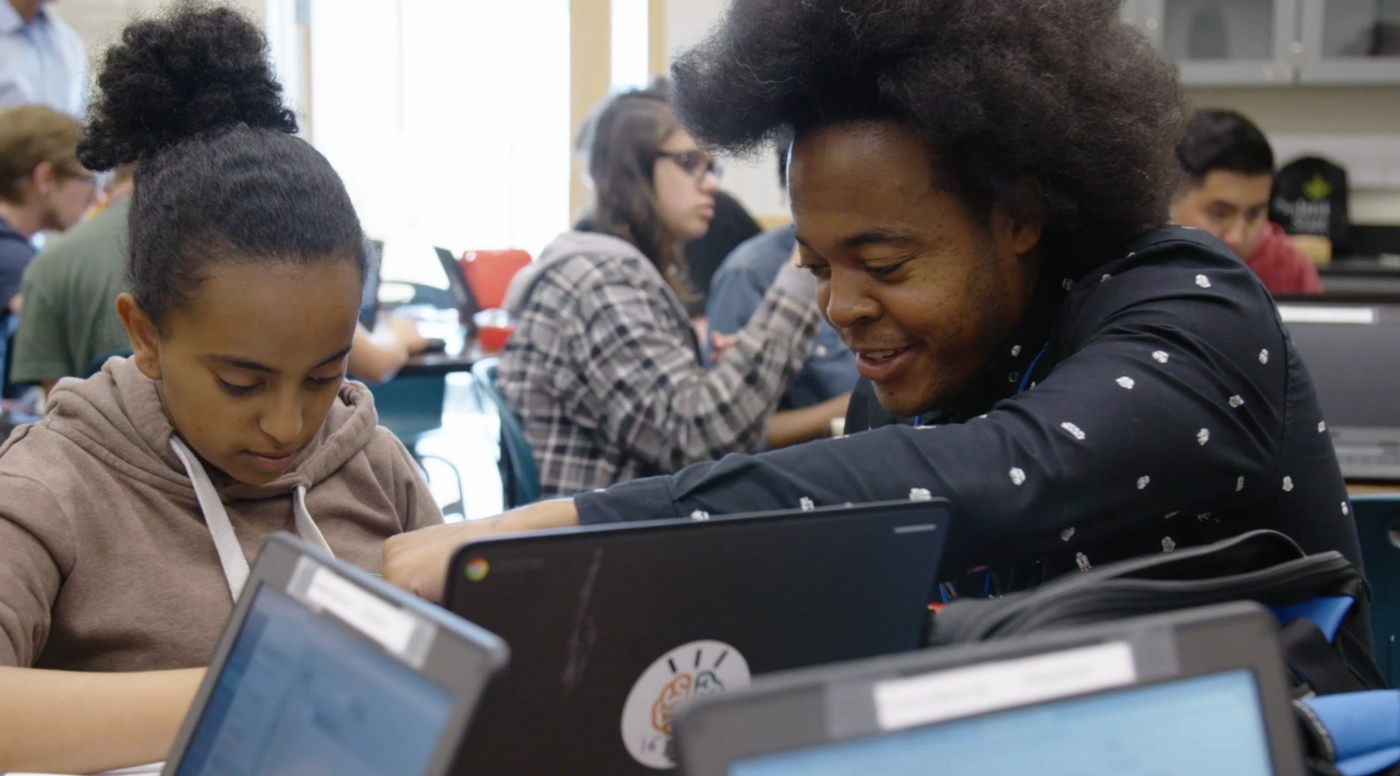Engineering for Good
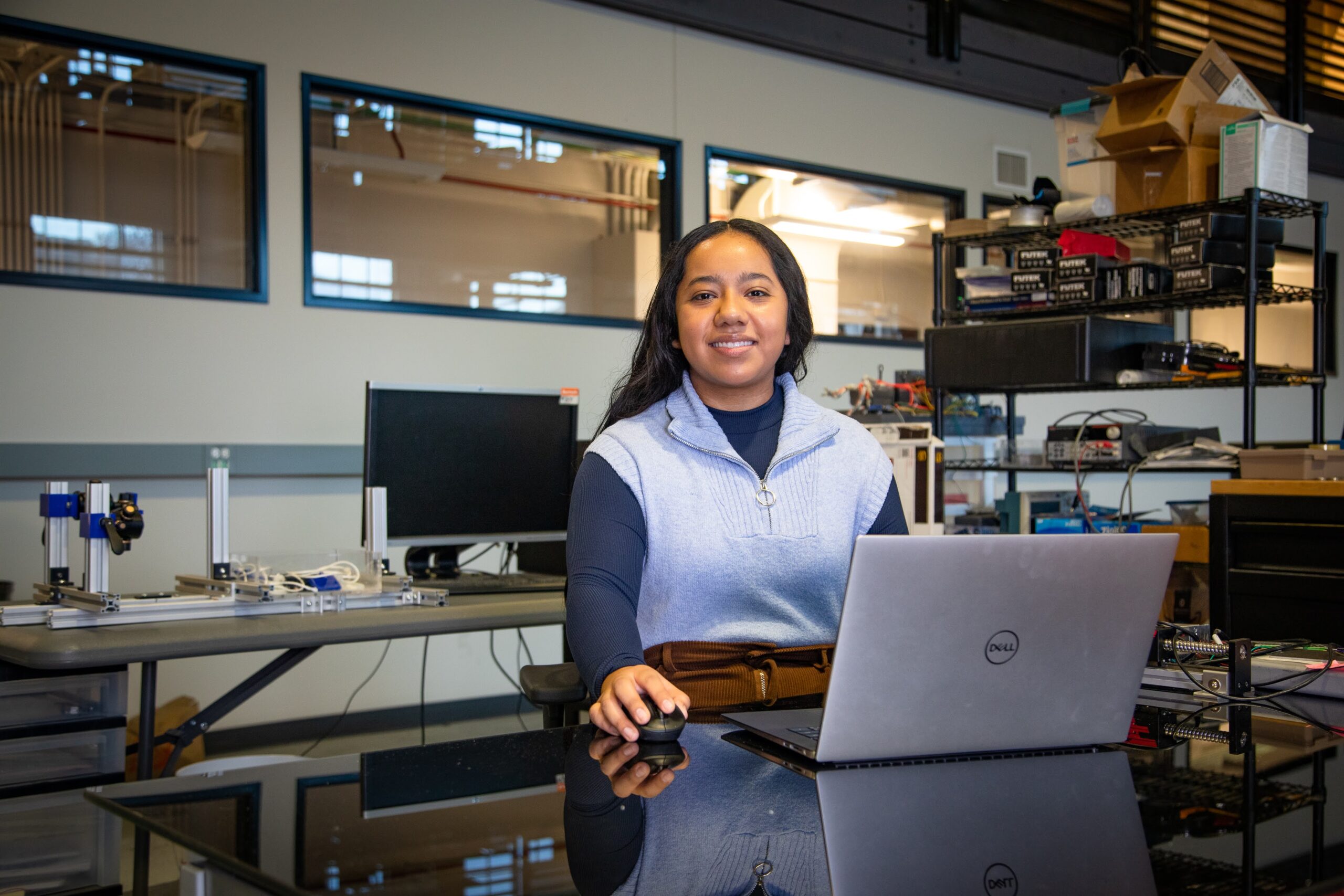
(Pictured above: Lesly Rojas in her school’s lab.)
Invention education programs inspired this young inventor to pursue engineering to make an impact in people’s lives.
In a literal light bulb moment, young inventor Lesly Rojas found her calling when a robotic arm prototype she had created lit up. It was part of an affordable prosthetics project organized by the invention education program Oregon MESA in her middle school.
“I just remember seeing it light up and thinking, ‘Yeah, this is what I’m going to do for the rest of my life,’” Rojas recalled. “‘I’m an inventor.’”
That moment — combined with attending engineering classes at McKay High School in Salem, Oregon, and joining the Lemelson-MIT InvenTeams (LMIT) program — propelled Lesly to pursue a career as an electrical and computer engineer.
She went from helping design multiple inventions — that prosthetic arm, an adaptive drinking cup for people with dysphagia, and a device to help agricultural workers more easily harvest blueberries — to becoming a first-generation college student studying engineering while also advocating for underrepresented students in STEM.
We recently spoke to Lesly about her inventor’s journey, and how invention education programs sparked a passion for human-centered engineering to help improve lives.
This interview has been edited for length and clarity.
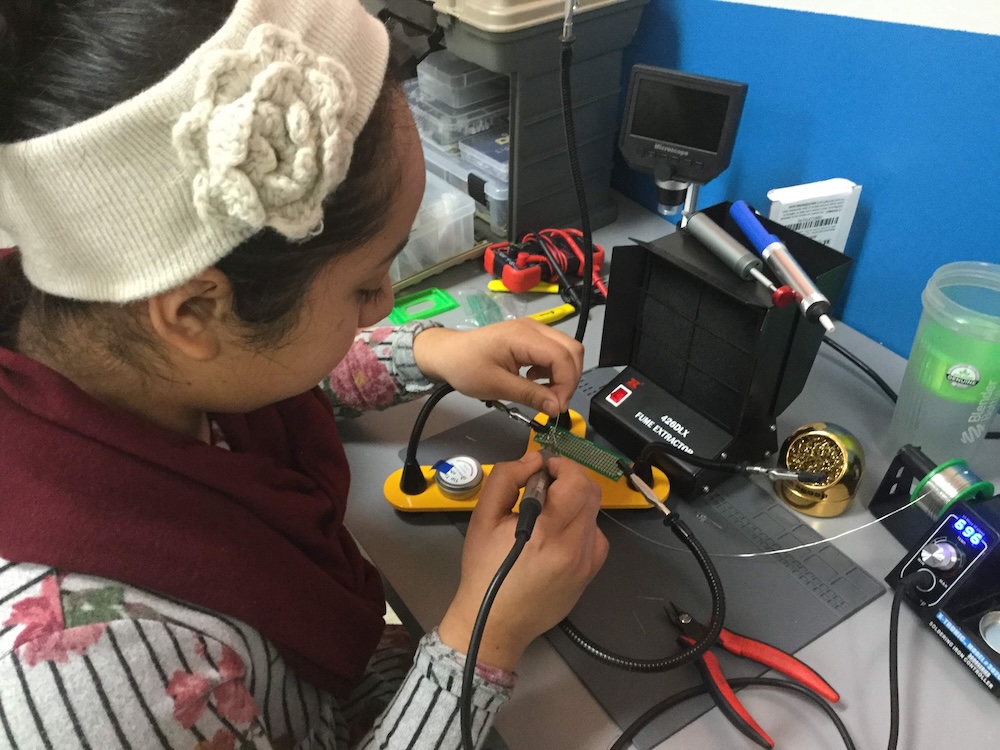
How did you first get involved in STEM and invention education?
I got interested when a friend invited me to Oregon MESA, an after school engineering club at my middle school. It was a way for us to hang out and have some snacks, and we were really excited. We both wanted to be writers. We had a notebook that we would pass around and tell stories and get creative. At that time in my life, I thought the only pathways to a “successful career” were to be a lawyer, a doctor, or a scientist. I didn’t even know what an engineer was.
Can you describe the first prototype you designed?
Our introduction to invention and engineering was to interview someone, ask them what problem they’re facing, and then create a solution for them. At that first MESA meeting, we were tasked with creating the perfect wallet for our teacher. We wrote down all of our ideas and then we brought back a cardboard prototype the next week.
I came back with a wallet with a bunch of USB ports and pockets so that this wallet could be the best thing that he could ever have. Honestly, for that first design, I didn’t follow the structure that he wanted. He said, “Well, this is really awesome, but it’s a little big. And I don’t want to sit down on a bulky wallet.”
I went back to the drawing board to make it better for my teacher. That first project was so simple, but it caught my eye and I kept coming back. And it wasn’t about the snacks or just spending time with my friends as much anymore.

In high school, you and your high school classmates won an InvenTeam grant from LMIT. Can you describe the idea behind the adaptive drinking cup you presented at the EurekaFest competition at MIT?
A volunteer physical therapist in our community came to talk to us about problems facing the senior citizen community. He talked about dysphagia, which essentially is the inability to swallow properly. One of the solutions in the market is adaptive cups, but a lot of older citizens don’t want to use them because they look like a child’s sippy cup, or they just don’t adapt with the patient as they learn how to drink and swallow again. The patients usually get better over time, but the cup doesn’t progress with them, and so they have to buy multiple versions of them. And so we created two adaptive cups with different features that could truly adapt to the patient.
During the pandemic, you were also on a team that created a device to help agricultural workers harvest blueberries in the summer. Can you share more about this invention and why it was important to you?
Our community was the setting for this project, and the team ended up interviewing our moms and dads because that’s who we had available right in the middle of the pandemic. My mom worked at a blueberry factory, where you pick the blueberry and then it has to be sorted through big machines before it’s ready to be shipped out. One of the biggest problems was that the blueberries got bruised very easily — either when they were picked or put through the machine — and there was also a lot of product left behind.
We were also thinking of the agricultural workers. We come from a community where a lot of the students and parents are working in these fields throughout the summer. We thought about how to make this more efficient for them, to not have to be in the sun as much or not have to be worried about where the fruit is going. So those were the main ideas behind a trolley system we created for picking up the fruit and an agricultural attachment for the existing machinery for sorting it.

You worked on that project with your brother. It seems like your siblings have followed in your footsteps with invention education.
Yes! My brother Oscar is now a college freshman in mechanical engineering. He’s been a year-long mentor to the students at Oregon MESA, giving back to the program that led him to pursue engineering. We both attended Demo Day this year where MESA students presented their inventions — Oscar was there as a mentor, and I was there as a speaker.
Even more exciting, our youngest brother Brandon was there showcasing his project in the middle school division. My parents were also there. They got to see the inventions and how these programs have had an impact not just for the next generation, but within my own family, this current generation. It was a really full-circle moment.
How did your family also inspire you?
My parents have always been my number one supporters. They didn’t have the luxury of education growing up, but that didn’t take the mindset away from them that education is highly valuable and that they would do everything possible so that their children could have one. I am a part of a loving family with values of hard work and perseverance. I am a child of immigrants, the oldest sibling in my family, and the first in my family to attend a university. They are my motivation to continue following my dreams.
What are some of the skills that invention education-focused programs taught you?
Usually in a classroom setting, failure is the stopping point and there’s a bad grade attached to it. But in these other invention education settings, it was more about how are we going to improve? How are we going to persevere to a solution?
I think these programs are absolutely crucial to students because they see that their work matters, that people actually care about these problems being solved. They get to think about the end user — who they are making things for — and so it all comes down to people and empathy.
I also got experience in public speaking — speaking to the people I’m presenting to about our project, and communicating my ideas a little bit better to my team. At the end of the day, a lot of the work of engineering also requires a lot of communication.
After you started at Oregon State University, you were able to intern at Medtronic and HP. How were those experiences?
During my internship at HP in the Micro-Electromechanical Systems department, I gained hands-on experience in the semiconductor industry, particularly in testing and optimizing the manufacturing processes. I worked in a cleanroom environment, testing materials and automating various aspects of the process by coding robotic probers.
At Medtronic, I worked in the Surgical Robotics department with their Robotic-Assisted Surgery (RAS) robot Hugo. My role involved supporting the development and testing of robotic systems used in minimally invasive surgeries in the stomach. Along with my previous work in the medical field and human-centered design, this experience solidified that I want to end up in the medical field as an engineer.
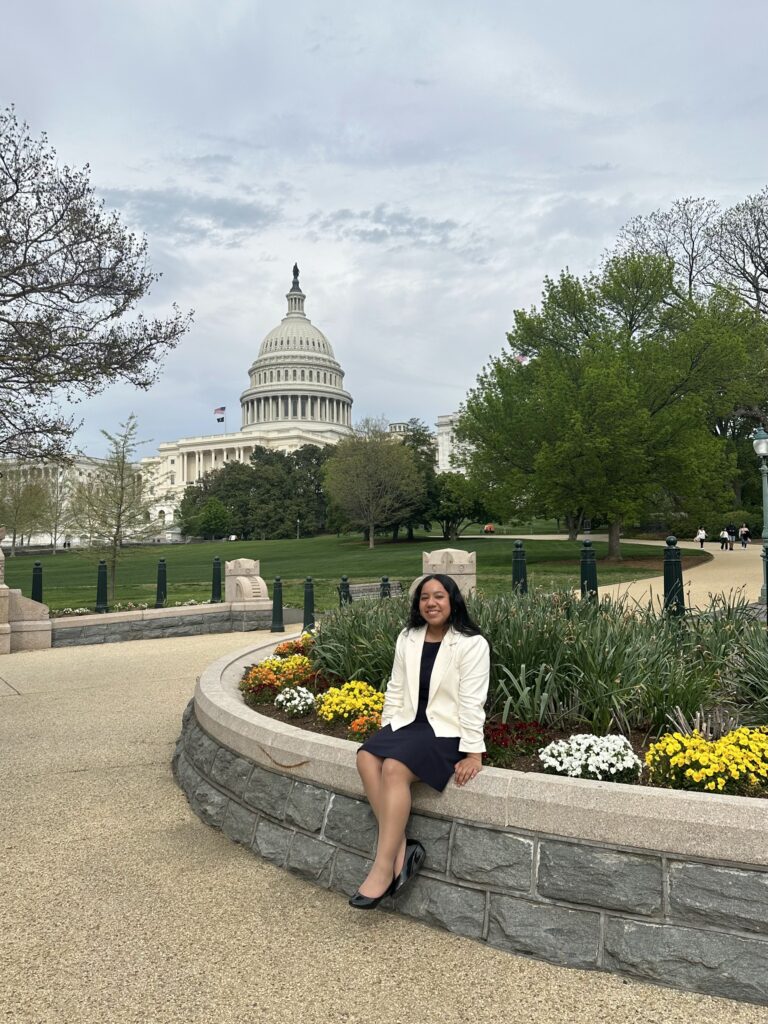
You’ve testified about the importance of invention education and STEM at the Oregon State Legislature and the U.S. Department of Education. Can you share why you think advocating for these programs is so important?
Making sure students are aware of these programs is the most important thing. I walked into that MESA classroom in middle school not knowing what I was getting myself into, and that it would change my life. If invention education can be more available and accessible to more students in the classroom, I believe it would make a big impact in our education system.
Who have been your mentors? How did they help you advance?
All of the MESA teachers have just been incredible mentors, and I actually stay in touch with them. And then there’s Katrina Hull, my high school teacher who brought us into the InvenTeams program. I think she’s the first person that I recognized as a true mentor and a friend because of how much I grew in that period of time. She encouraged me to learn and push myself, and taught me the importance of sharing my story and ideas with the world.
What is your advice to other young inventors?
An inventor for me is someone who looks to their community and creates things to solve people’s problems. And so I think it’s a superpower to be different, especially in engineering. We all come from different approaches, and that’s what makes it important for you to be at that table — because all these different experiences allow you to solve problems differently.

Important Disclaimer: The content on this page may include links to publicly available information from third-party organizations. In most cases, linked websites are not owned or controlled in any way by the Foundation, and the Foundation therefore has no involvement with the content on such sites. These sites may, however, contain additional information about the subject matter of this article. By clicking on any of the links contained herein, you agree to be directed to an external website, and you acknowledge and agree that the Foundation shall not be held responsible or accountable for any information contained on such site. Please note that the Foundation does not monitor any of the websites linked herein and does not review, endorse, or approve any information posted on any such sites.



